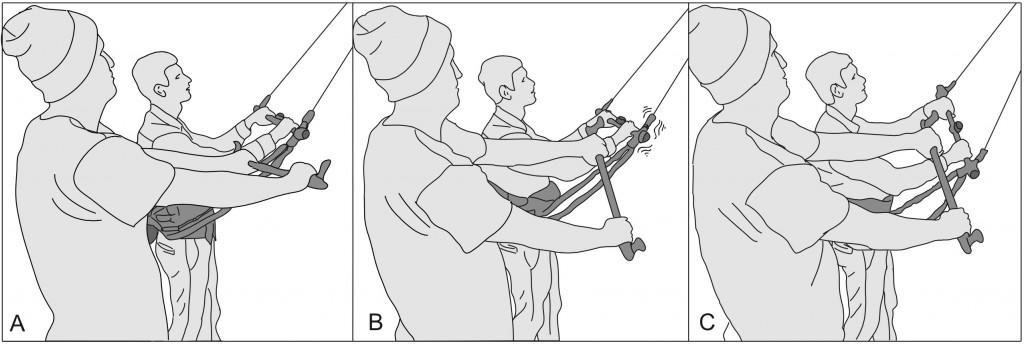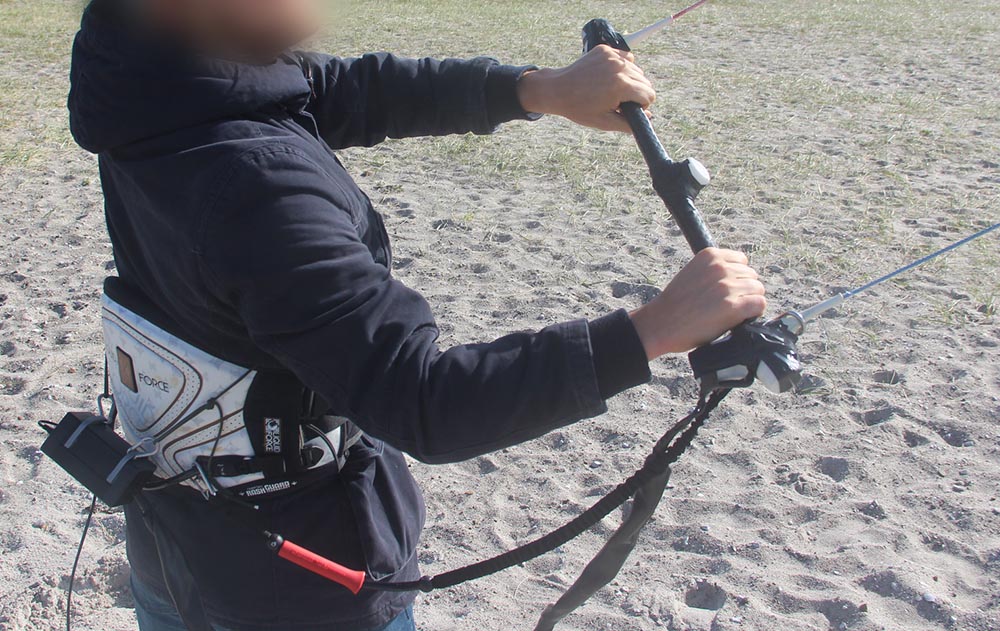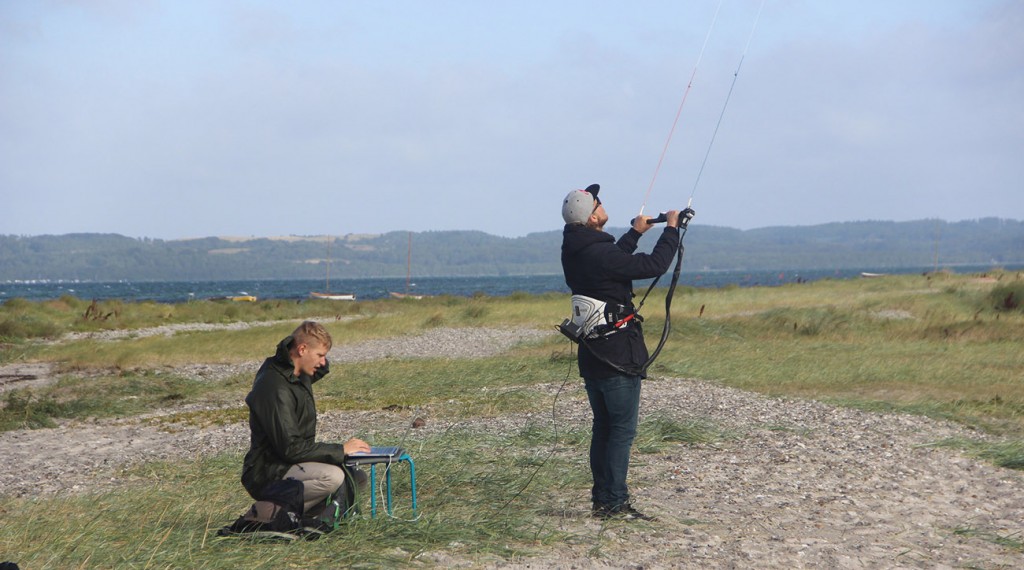
In modern sailboats, a student can learn with the guidance of an instructor who sits beside them and can take control of the vessel as needed. In kiteboarding, which is another form of sailing, the instructor and student are separated by a distance making this “hand-over-hand” training impossible.

A) Instructor with an input bar and student with the augmented kite control bar, which share position information B) Instructor moves the input bar resulting in vibrotactile guidance to the student. C) student responds to the strength and direction of the vibration to achieve the target position and a separate confirmation pulse is provided when the target is reached.
Our approach has been to explore alternative modes of communication between the instructor and student to provide guidance using non-verbal directional cues.
This research is conducted by HCI researchers who are avid kiteboarders recognizing the potential of digital technologies as a means to support beginners and experienced riders in this growing extreme sport. We have been working closely with kiteboarding instructors, riders, and manufacturers in the development of functional prototypes.

Tactile communication kiteboarding bar prototype senses the bar position and provides vibrotactile cues to guide the kiter in the positioning of the bar.
We thank the CrazyFly Kiteboarding company for their input and support!
For more information, please contact tim@ixd.net

